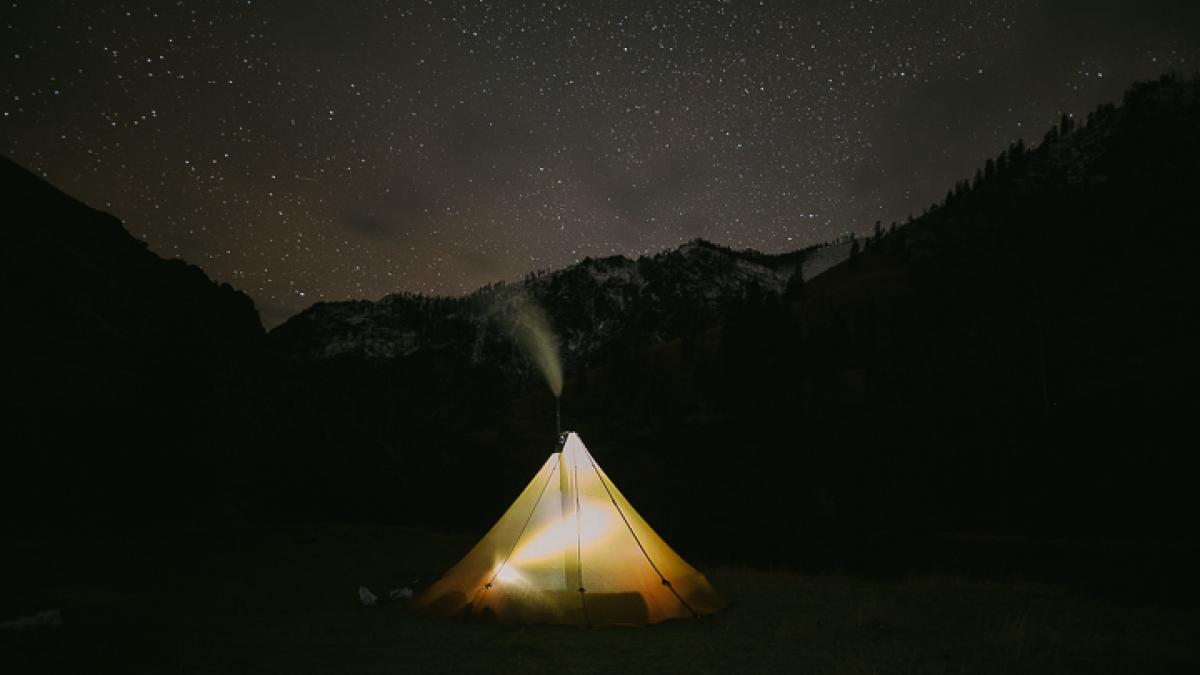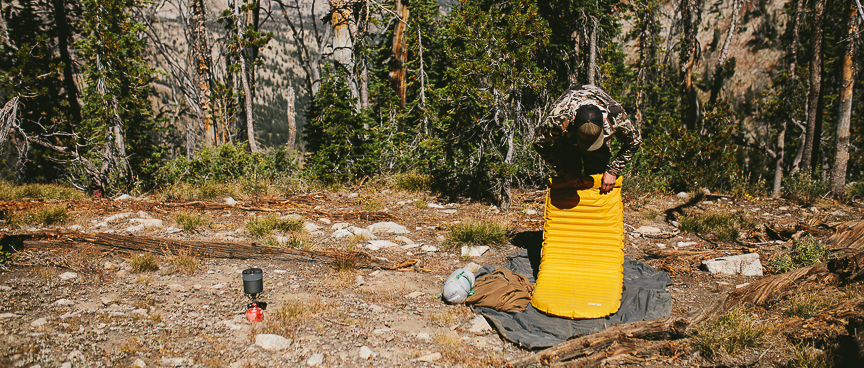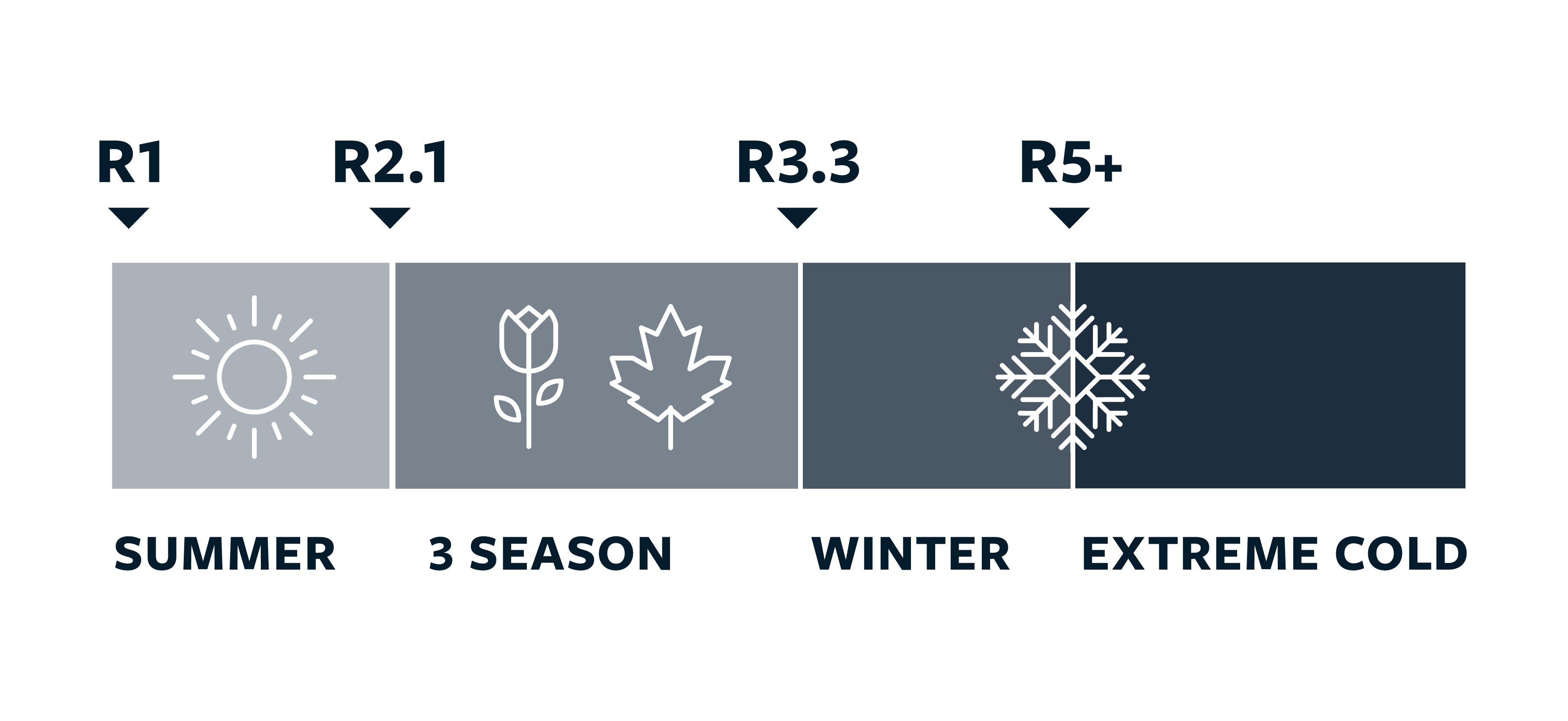
Sleeping Pads, R-Values and Backpack Hunting
By Brad Brooks
Your sleeping pad is equally, or even more important than your sleeping bag in keeping you warm. Candidly, that isn't something I understood until recently. But I'm a slow learner. If you are a backcountry hunter, understanding lightweight sleeping pads, R-values and how they work to keep you warm and comfortable could help you avoid a miserable nights' sleep next time you head out.
In this piece we will break down why sleeping pads are important for warmth, how they function, and recommend different R-value pads for different hunting seasons throughout the year.

Sleeping Pads are Important for Warmth
Not to overstate an incredible simple point, but this is important to digest. I've been a slow learner on this point. For years I mostly ignored this point and focused on the weight of my pad above all else. And if it was cold, I would bring a warmer sleeping bag thinking that was the way to stay warm as temperatures dropped. Bad idea.
This past year, on a November backpack trip, I was shivering at night in a brand new, very expensive and very reliable winter sleeping bag that was more than warm enough for the temperature outside. I could literally feel the cold coming in from underneath me and was sleeping on a nice fancy air mattress. The problem was it was really cold, even for November, and my pad wasn't designed to handle weather that cold.
After this experience, I grilled the people at ThermaRest about sleeping pads and staying warm. Turns out, a sleeping pad is equally as important as a sleeping bag in cold weather. Even with a super warm bag, if you fail to use a warm pad, you can still freeze (which I should have known).
Take head from my miserable experience and don't neglect your sleeping pad and the importance of it for staying warm, particularly if you are backpack hunting.
R-Values and Temperature ratings
An R-value is a measurement of insulation that measures how much something will resist heat flow. The higher the R-value, the more resistant it will be heat flow. Hence, higher R-value sleeping pads are going to retain the heat from your body better, and are going to be warmer sleeping pads.
Unfortunately for us customers, not all R-values are created equally. There is no governing body or third party to make sure that what a company claims as an R-value is actually accurate. So some degree of skepticism is warranted on R-values, especially if you wander outside of the top few brands.
But there is hope! By 2020 most major sleeping pad brands will have an independent third party ASTM certification process to decide what R-value brands will be able to put on their pads. This will be a big change, and a welcome one.

Sleeping Pad Construction
A sleeping pad has two jobs: Keep you comfortable, and keep you warm. On the second point, a sleeping pad is critical for keeping you warm, particularly when it gets cold. The way sleeping pads accomplish this goal is by keeping still, warm air close to your body and cold air away from your body (which usually comes from the ground). There are a few different ways sleeping pads do this.
-
Trapping Warm Air-Some pads use a combination of foam and air, and early generations of backpacking pads usually had a layer of foam on top of the pad with air for insulation and comfort. Foam is a great product for trapping air and making for a good nights sleep. In fact, there are still a number of pads that use the foam and air combination in sleeping pads to provide warmth (If I didn't care about weight, I'd carry a memory foam pad with me on every backpack hunt). But foam is heavy relative to other materials some of the superlight sleeping pads use, and for backpack hunters a pad with foam is almost always going to be heavier than one without it.
-
Radiant Heat + Trapping Warm Air- The newest lightweight pads, such as the ThermaRest NeoAir line, also trap warm air but they leave out the foam. They are also trying to trap cold and warm air in opposite directions to keep cold air close to the ground and warm air close to your body. To accomplish this inside the pad there are layers of material that run the length of the pad that trap air to create multiple layers of trapped air. Some pads also use a material with a heat reflective coating to add additional warmth by radiating your body heat back towards you, and radiating cold air down towards the ground. Pads like the ThermaRest NeoAir Xlite have a few layers of radiant reflective material, and winter grade sleeping pads like the NeoAir XTherm have a maximum number of layers and use radiant heat to add warmth.
So Which R-Value Should You Pick?
They are no hard and fast rules, but there are general guidelines. Below is the general guideline that ThermaRest recommends by season of use.

I tried extremely hard to pin down the experts at ThermaRest on an giving me a recommended R-value for outside temperatures. But being the pros they are, they evaded my simple minded requests since how warm you will stay depends on a myriad of factors like your sleeping bag, tent and ground temperature (which is more variable than you might think).
It's important to note here that R-values do not translate to temperature ratings since an r-value is a measurement of the flow of heat. This is why most big brands resist putting temperature ratings next to r-values, tempting as it may be. The closest most brands will give you is a recommended temperature range.
Luckily, I care less about objectivity and more about dealing with real world scenarios. With that in mind, I created my own chart to help simple people like myself make sense of all this math. The chart below is based off of R-value season guides, my experience with different sleeping pads, the experience of other people at Argali and what I gleaned from a few experts.
This is a rather conservative table, but I hope this is helpful as a guide. I put in assumed temperature ratings for a reason as temperatures can vary wildly during the fall from year to year, and ground temperature becomes a much more significant factor late in the season. Even if it snows on you in September, the ground won't be as cold as it will be in late October after a month or more of frigid temperatures, which can affect how well your pad insulates your body.
Annectodtally, I've also used a 3.3 R-value pad many times during late October when the weather is in the low 20's at night, or even a little colder, and been comfortable.
There is some subjectivity here, which I want to be transparent about, but this should be helpful as a rough guide for all you backpack hunters.

Lightweight, Warm or Both
As a general rule, the lighter weight a pad is the lower the R-value it is likely to have since there is likely less material inside the pad working to trap warm air to keep you warm. For backcountry hunting, and particularly for backpack hunting, going with the lightest pad and lowest R-value you need is a good idea.
But if you ride the line between comfort and weight, be prepared to occasionally suffer. Figure out where you're tolerance is for suffering, and pick the lightest pad that fits your threshold.
In the winter months, as I've learned the hard way, be sure to take a well-insulated pad suitable for the location and temperatures your hunting. Suffering in early September on a cold night is different than in late November when the nights are much longer.
Tips for Buying a Pad
- Pick the Right Length-You can save some weight, particularly in the early season, by getting a pad that is slightly shorter than you are as a pad doesn't need to be as long as you are necessarily. Stack your pack at the top of your pad as your pillow so your neck is on above your pad, or stuff a jacket under your feet at the end of your pad.
- Pick the right R-Value-See above.
- Comfort-Two or more inches of air thickness when set up is usually as good as it gets for a lightweight backpacking sleeping pad, and is usually sufficient.
- Buy once cry once-When you're on a backpack hunt and your pad fails, it will make your hunt miserable after a couple nights with terrible sleep. Whatever you get, get something of decent quality.
My Favorite Pads by Season
- ThermaRest Uberlite-August and September-This pad is incredibly light at 8 ounces and is barely the size of a beer can.
- ThermaRest NeoAir Xlite- October and early November- I've had the same Xlite for 4 years and it is my go-to pad even when there is snow on the ground. and at 12 ounces it is still super light.
- ThermaRest NeoAir Xtherm-November (depending on temps) through January-Same pad as the Xlite but with more insulation. Super warm and still lightweight at around a pound.
I'd love to hear you're favorite pad, story or anything else you have to share. And if I forgot to cover something, comment below!